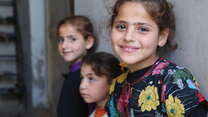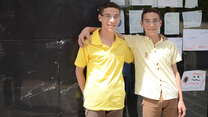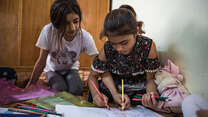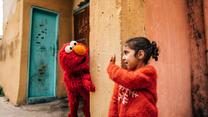Executive summary
Throughout the Syrian conflict, children’s education has been disrupted by displacement and insecurity. 5.8 million children between the ages of 5 and 17 in Syria require education assistance. Approximately 1.75 million children and youth are already out of school, with many more at risk of dropping out. More than 150,000 education personnel have left the formal system, and a third of schools are damaged or unusable.
The IRC ensures students affected by the crisis have access to education by supporting five schools in Northern Syria. Despite concerns and anecdotal information about children’s ability to learn in such challenging conditions, little information exists about children’s learning levels inside Syria. Seeking to understand the situation in Syria and to design education programs to meet student needs as effectively as possible, the IRC has collected data that provide critical insight into reading and math levels of internally displaced and host community children. In addition to contributing to available information about learning, this data collection process demonstrates the feasibility of measuring learning even in a difficult context.
The IRC began with an Annual State of Education (ASER) pilot with 122 students (96 boys and 26 girls) in two schools in Idleb in December 2015. Of children assessed in grades 4, 5, and 6, 79% could not read at a 2nd grade level, and 71% could not complete a 2nd grade level math problem.
The IRC subsequently undertook a larger ASER assessment in November 2016 in five IRC-supported schools in Idleb Governorate. The sample covered 2,846 children (1,255 boys and 1,591 girls). The results from this second assessment underline sizeable challenges related to learning in assessed schools and point to the need for continued research and support for quality education to ensure children are in school, safe, and learning.
Findings
- 59% of 6th graders, 52% of 7th graders, and 35% of 8th graders could not read a simple, 7-10 sentence story—the equivalent of 2nd grade reading skills.
- 64% of 6th graders, 63% of 7th graders, and 46% of 8th graders could not solve a subtraction problem—the equivalent of 2nd- grade math skills.
- Girls frequently outperformed boys, and the differences are most striking in higher grades. A much larger percentage of 7th and 8th grade girls could read at a grade 2 level than 7th and 8th grade boys (59% of girls in grade 7, compared to 23% of boys and 72% of girls in grade 8, compared to 38% of boys). Boys’ scores are dramatically lower in grade 7 (19% able to subtract, compared to 45% of girls) and grade 8 (35% able to subtract, compared to 60% of girls).
Recommendations for donors
- Require the programs you fund to seek education outcomes (not simply outputs), and invest in building actors’ capacity to collect and share data on outcomes.
- Direct your resources to programs that seek reading, math, social-emotional, safety and access outcomes. Given what we know from education research about how outcomes influence each other, ensure that programs include all of these outcomes, not one or two of them.
- Invest in programs that are based on the best available evidence about how to achieve these outcomes.
- Dedicate 10% of all funding towards research and learning that will provide the sector with a strong evidence base on the best ways to achieve outcomes. Investments should go towards generating evidence on what works, where, for whom, under what conditions and at what cost.
Background and IRC intervention
Children in Syria face numerous challenges, including limited access to education. The 2017 Humanitarian Needs Overview notes that 1.75 million children and youth are already out of school, with significantly more at risk of dropout, and 5.8 million in need of education assistance. There are notable gaps in infrastructure and human resources; one-third of schools are unusable or damaged, and over 150,000 personnel have left the formal system.
The IRC started its education and child protection programs in Northern Syria in 2013 in informal settlements. Today, the IRC supports more than 3,500 students through five off-camp schools. Through these schools, the IRC implements its Healing Classrooms approach, which provides psychosocial, social, and educational activities to boys and girls, training to teachers, and parenting skills training to parents, through structured and age-appropriate activities that prioritize children’s safety, security, learning, and psychosocial well-being.
The IRC began its intervention in the schools discussed in this report in June 2015 by providing support to three pre-existing schools for host and displaced school-aged children. The IRC subsequently expanded to support two additional schools in 2016.
The impact of crisis on children
Crisis and conflict have direct and profound effects on children’s physical safety, well-being and ability to learn. Neuroscience has shown that children who experience the types of adversity common in crisis settings can have a physiological “toxic stress” response that inhibits their brain development, impacting their physical and mental health, behavior, relationships and ability to learn.
Crisis and conflict have direct and profound effects on children’s physical safety, well-being and ability to learn.
But this can be reduced or reversed. Children are remarkably resilient. When provided with the right support, such as safe, quality educational opportunities, the negative effects of hardship and stress are mitigated and children can heal, grow, learn and thrive.
The IRC’s Healing Classrooms approach—built on 30 years of education in emergencies experience and a decade of research and field testing—offers children a safe, predicable place to learn and cope with the consequences of conflict.
Methods and measures
For the data discussed in this report, the IRC used the Annual Status of Education Report (ASER) reading and math tools. In 2005, these tools were launched to document the level of children’s learning on a national scale in India.5 The ASER reading and math tools are easy and quick to administer, and provide basic information about learning outcomes. Assessors assign the child a score based on the highest level he or she can comfortably pass, on a scale from 0 to 4, in reading and math. Level 4 is approximately equivalent to the end of grade 2 in the reading and math curriculum, based on leveling undertaken by the IRC team.
Due to significant gaps in data and information on learning inside Syria, IRC undertook the ASER assessment in order to understand reading and math levels among supported students in grades 1-8. ASER was chosen as the measure because the tools are user-friendly and allow for a quick snapshot of early grade reading and math abilities.
The ASER assessment was conducted in 5 IRC-supported schools in Idleb, targeting students in grades 1 to 8. In each school, IRC education team members trained teachers, who subsequently conducted the assessment using paper forms over a two-day period in November 2016. After forms were collected, data were entered electronically by the IRC team. Although security challenges and children’s obligations at home made it impossible to reach all students, the final number assessed (2,846) represents approximately 73% of the children enrolled in grades 1-8 at the time.
Findings
ASER reading results
- In general, scores improve in higher grades, but there are still wide ranges within grades, and low scores even for some older students. In 8th grade, 11% of students (10% of girls, and 12% of boys) scored a 0 or a 1, meaning they could not identify words.
- Since ASER tests for 2nd-grade level skills, ideally 100% of all students in 3rd grade or above should earn the highest score. In this assessment, only14% of 3rd graders (18% of girls, and 10% of boys) did. Scores point to concerning gaps in learning even in higher grades; 59% of 6th graders, 52% of 7th graders, and 35% of 8th graders could not read a story—the equivalent of a 2nd grade level of reading.
- A much larger percentage of girls than boys achieved the highest score in reading in grade 7 (59% of girls, compared to 23% of boys) and grade 8 (72% of girls, compared to 38% of boys).
ASER math results
- As with reading, scores generally improve in higher grades, but there are still wide ranges within grades, as well as low scores for some students in all grades. In 8th grade, 9% of students (8% of girls, and 12% of boys) scored a 0 or a 1, meaning they could not identify double-digit numbers.
- Since ASER tests for 2nd-grade level skills, ideally 100% of students in 3rd grade and above should earn the highest score. In this assessment, only 15% of students (16% of girls and 15% of boys) did. Gaps in foundational math abilities in higher grades are also apparent. 64% of 6th graders, 63% of 7th graders, and 46% of 8th graders could not solve a subtraction problem—the equivalent of 2nd-grade math skills.
- A higher percentage of girls than boys achieved the highest score in every grade other than 6. Boys’ scores are dramatically lower in grade 7 (19% able to subtract, compared to 45% of girls) and grade 8 (35% able to subtract, compared to 60% of girls).
Reading and math comparison
- Math scores are higher on average than reading scores in the early grades, which could be linked to students’ number use in daily life (currency, telling time, etc.). Grade 6 sees nearly equal average scores for reading and math, with stronger average reading scores emerging in grades 7 and 8.
- Girls’ average scores are higher than boys’ in both reading and math in every grade but grade 6.
- Average scores in both reading and math are low for both boys and girls, pointing to the need for additional programming to support foundational skills.
Recommendations for donors:
- Require the programs you fund to seek education outcomes (not simply outputs), and invest in building actors’ capacity to collect and share data on outcomes.
- Direct your resources to programs that seek reading, math, social-emotional, safety, and access outcomes. Given what we know from education research about how outcomes influence each other, ensure that programs include all of these outcomes, not one or two of them.
- Invest in programs that are based on the best available evidence about how to achieve these outcomes.
- Dedicate 10% of all funding towards research and learning that will provide the sector with a strong evidence base on the best ways to achieve outcomes. Investments should go towards generating evidence on what works, where, for whom, under what conditions and at what cost.
Recommendations for the IRC:
- Continue to collect and share basic learning data to advocate for investments going to what is needed.
- Share ASER findings at the local level, to expand the information available and to encourage parents to focus on their children’s learning and attendance.
- Disseminate the findings within the education and humanitarian communities to raise awareness of the low learning levels in Syria.
- Train other actors operating in Northern Syria in the use of ASER to support additional data collection and information about learning.
- Prioritize remedial programming intended to build these foundational skills.
- Implement social-emotional learning programming to help students develop skills for success in school and in life.
- Carry out an endline at the end of this academic year to assess progress.



